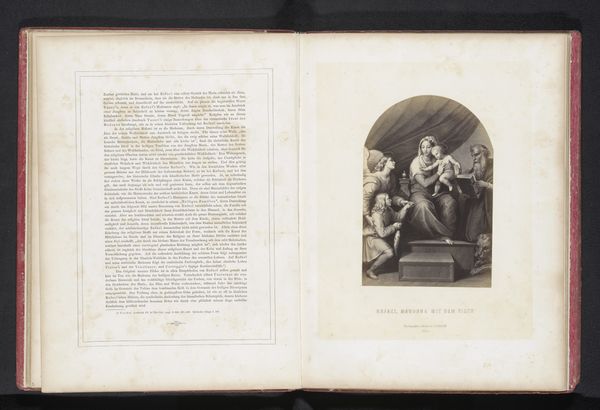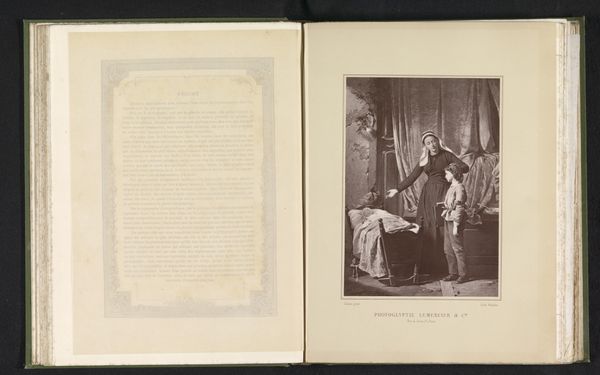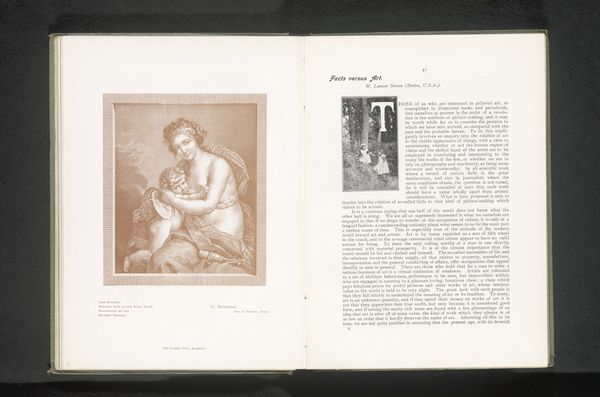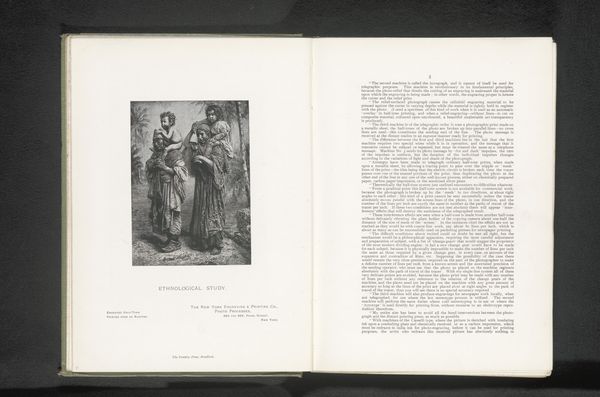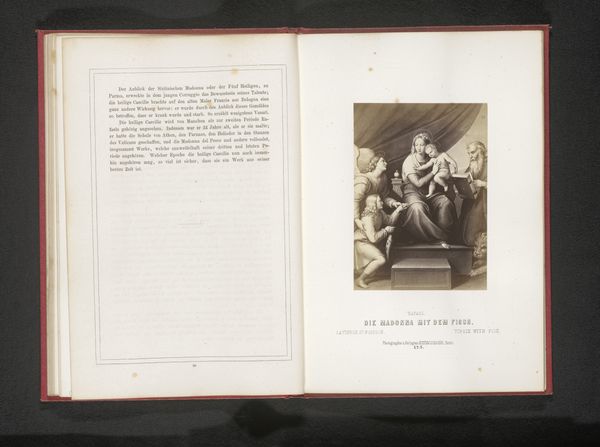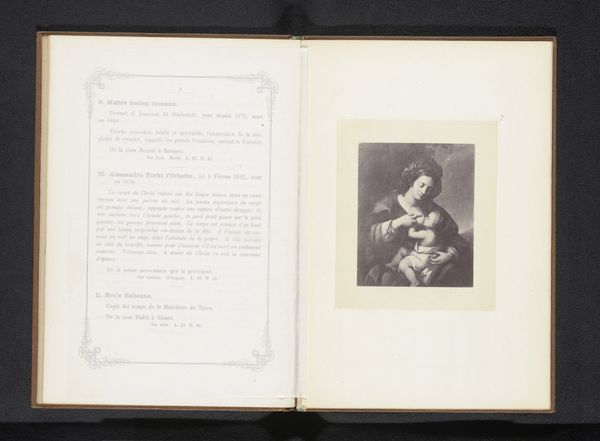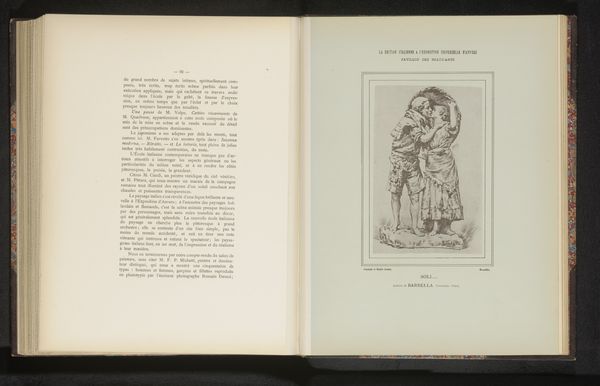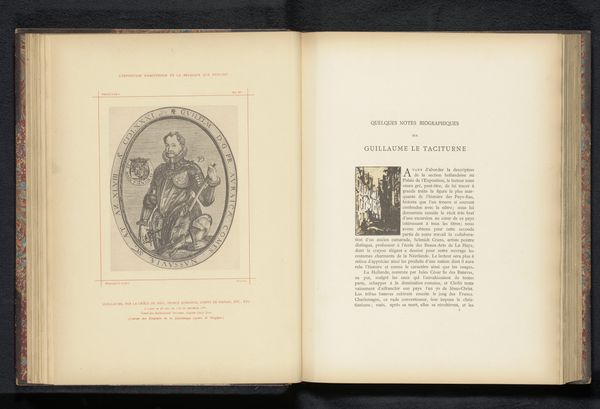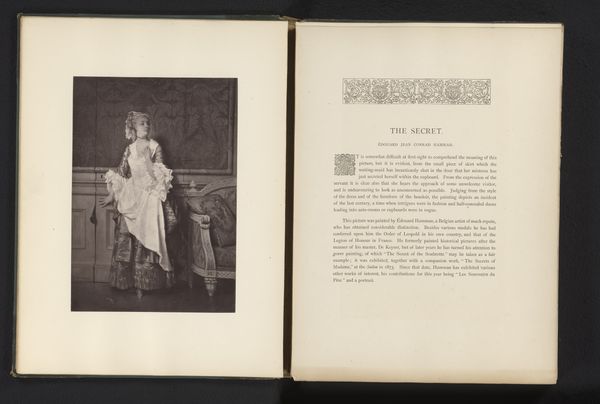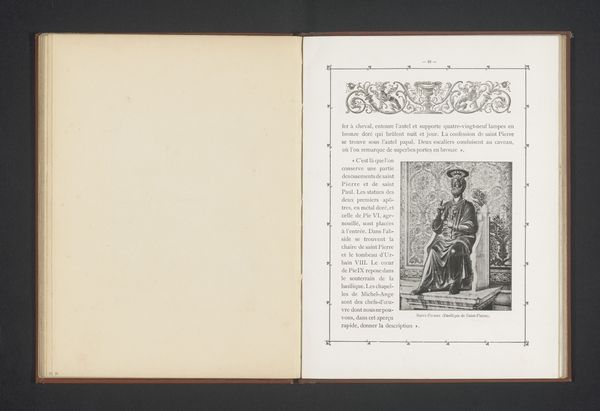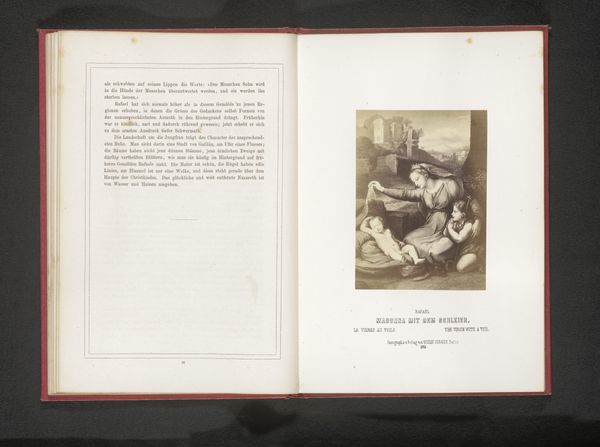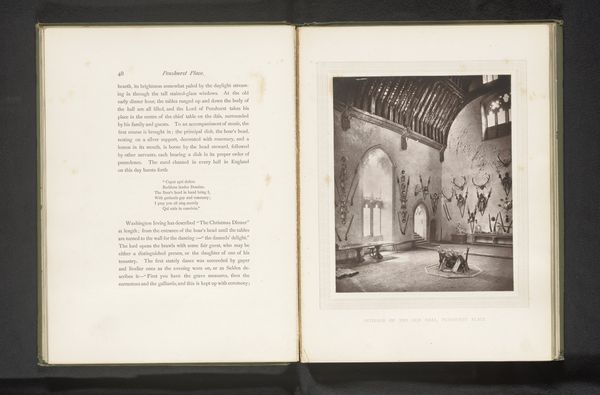
Reproductie van een schilderij van The poison cup door John Dawson Watson before 1879
0:00
0:00
Dimensions: height 233 mm, width 190 mm
Copyright: Rijks Museum: Open Domain
Curator: This is a reproduction of “The Poison Cup” by John Dawson Watson. It seems to have been completed before 1879, and here we see it in an etching and engraving. Editor: Woah, it’s quite somber! A stillness, almost a heavy expectancy, radiates from the man’s pose as he contemplates his drink. It makes me feel slightly uneasy. Curator: It’s fascinating how Watson, through these reproductive print techniques, disseminates what was originally exhibited as a Royal Academy oil painting. These methods inherently democratize art access through cheaper reproduction. Editor: Exactly. Plus, look at the almost photorealistic detail achieved with etching. The intricate textures on the wood paneling, the velvet-looking folds of the cape. Do you think the popularity of these print methods influenced his source painting? Curator: In a way, perhaps. Genre paintings, scenes from everyday life, exploded in popularity alongside advancements in printmaking. Consider the burgeoning Victorian middle class craving affordable art for their homes. Etchings and engravings filled that desire, shifting art away from solely aristocratic patronage. Editor: That resonates. The cup, though ominous given the title, is undeniably beautiful—part of an intimate, domestic scene. Is Watson subtly commenting on the allure of dangerous choices amidst this newfound domesticity? Curator: Perhaps he's less interested in personal failings and more in class anxiety. The composition directs our eyes immediately toward this solitary man who is drinking a 'poison cup'. What socio-economic anxiety might this image expose? The means of the cup, of this ritualistic decision. Is he in fact truly alone or does he see prying eyes from behind that chair. We can only speculate as to the social commentary that we must come to consider with respect to the means that brought the viewer this image. Editor: The chair does seem a touch haunted now that you mention it. Food for thought on my next ponder with this artist. This piece now seems pregnant with a multiplicity of narratives. Thank you for bringing this material into the light, my appreciation goes to both the means and ends of the artwork, equally.
Comments
No comments
Be the first to comment and join the conversation on the ultimate creative platform.

